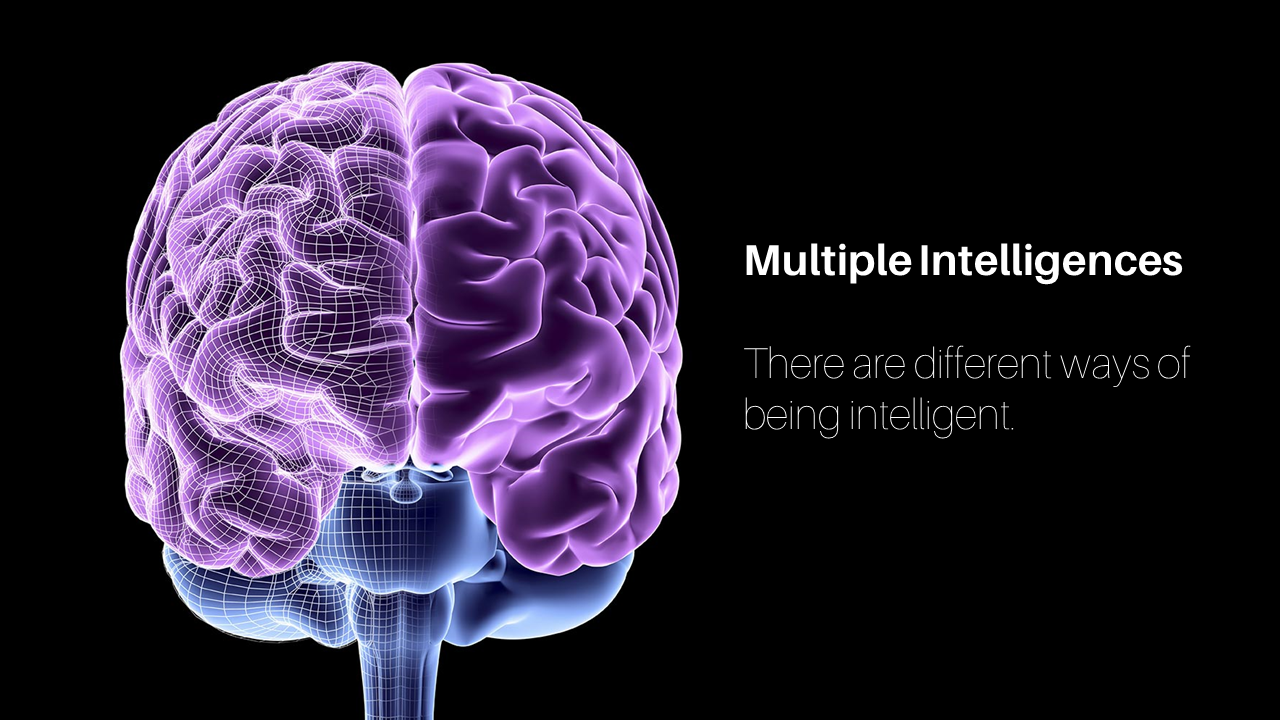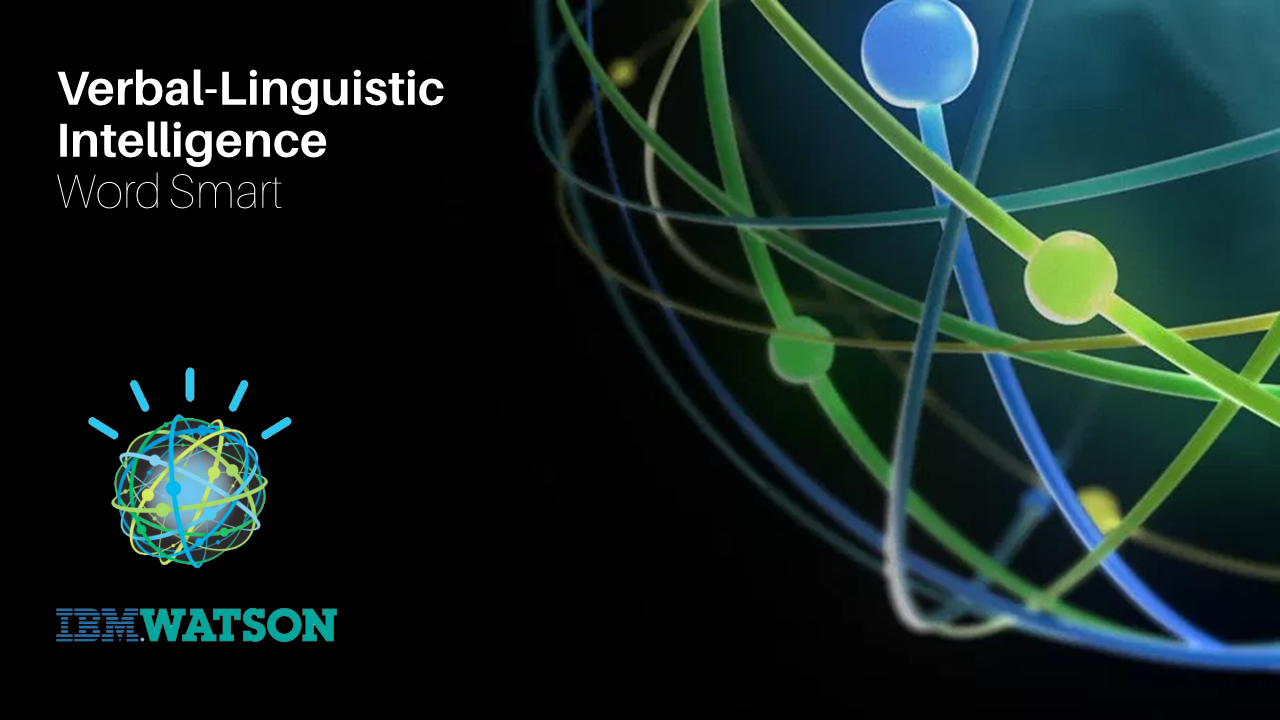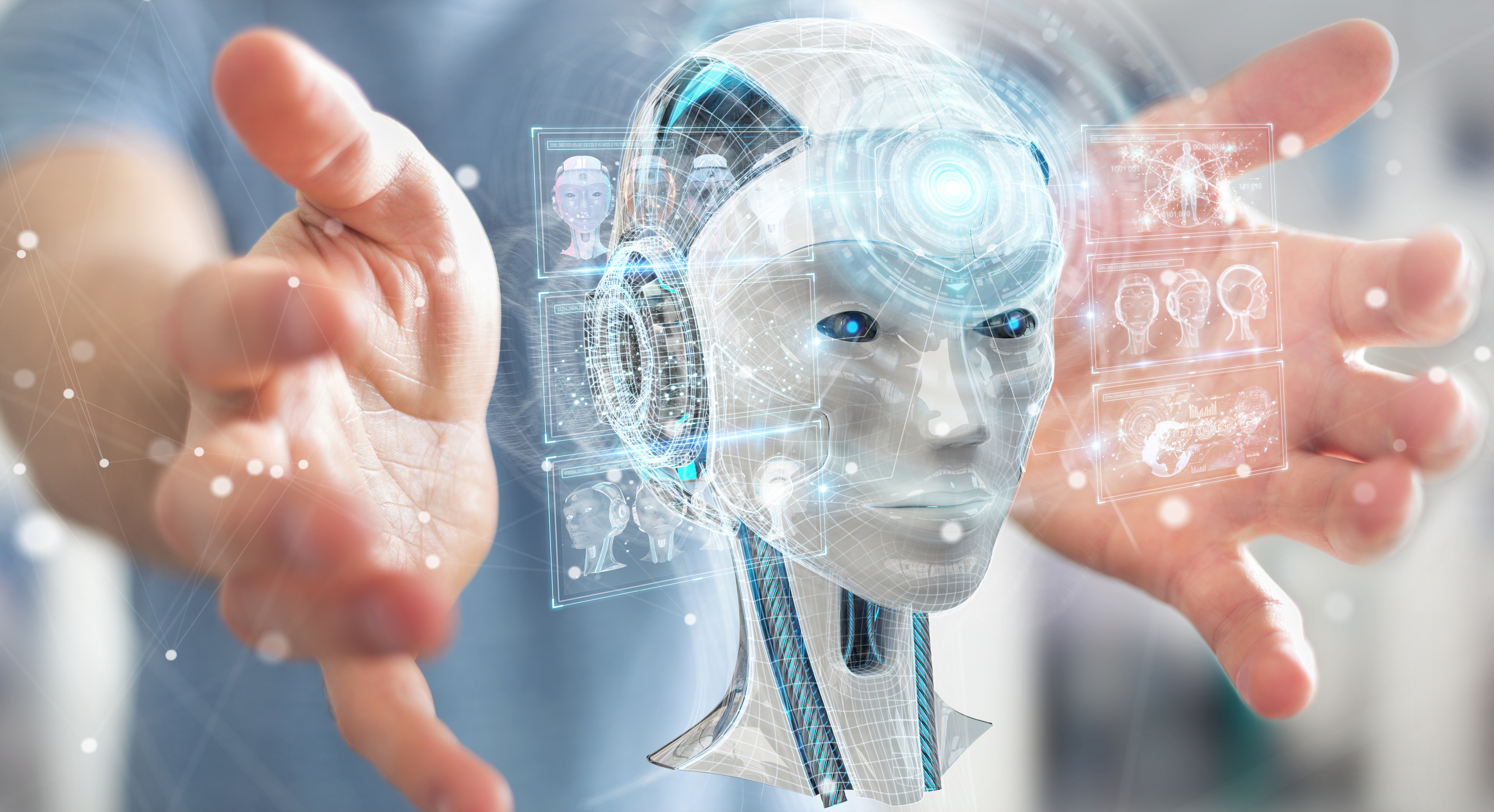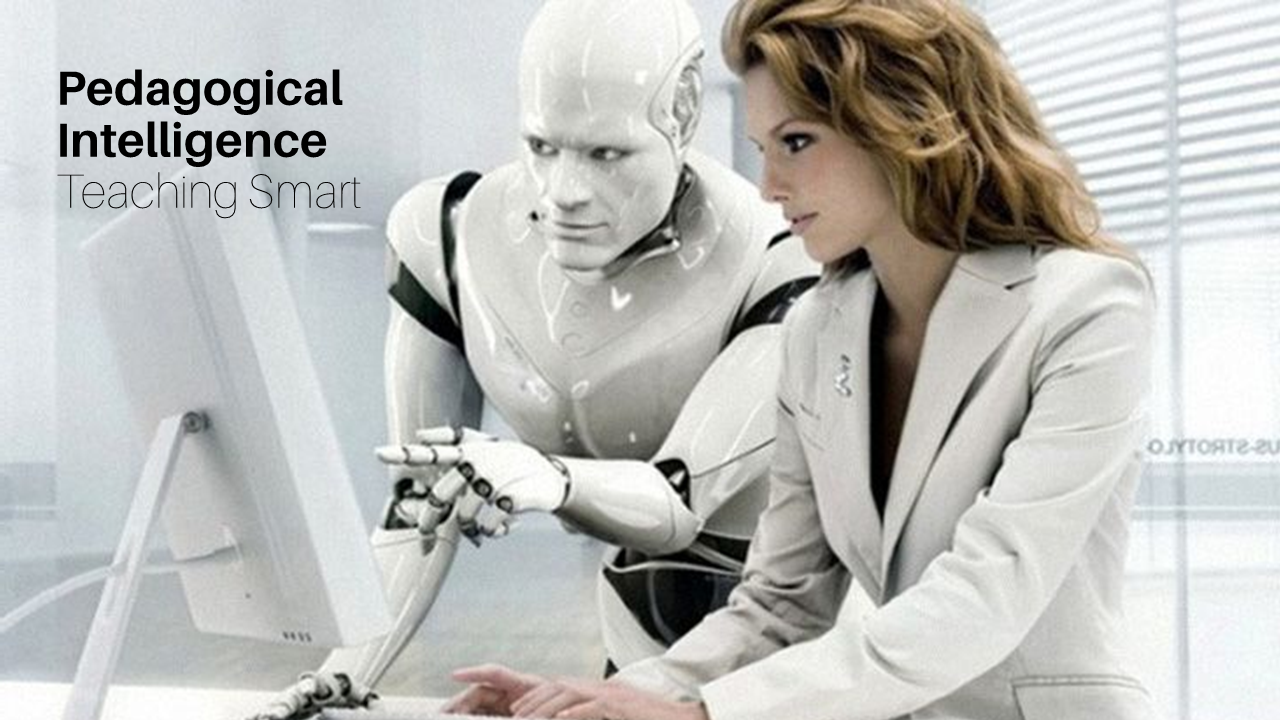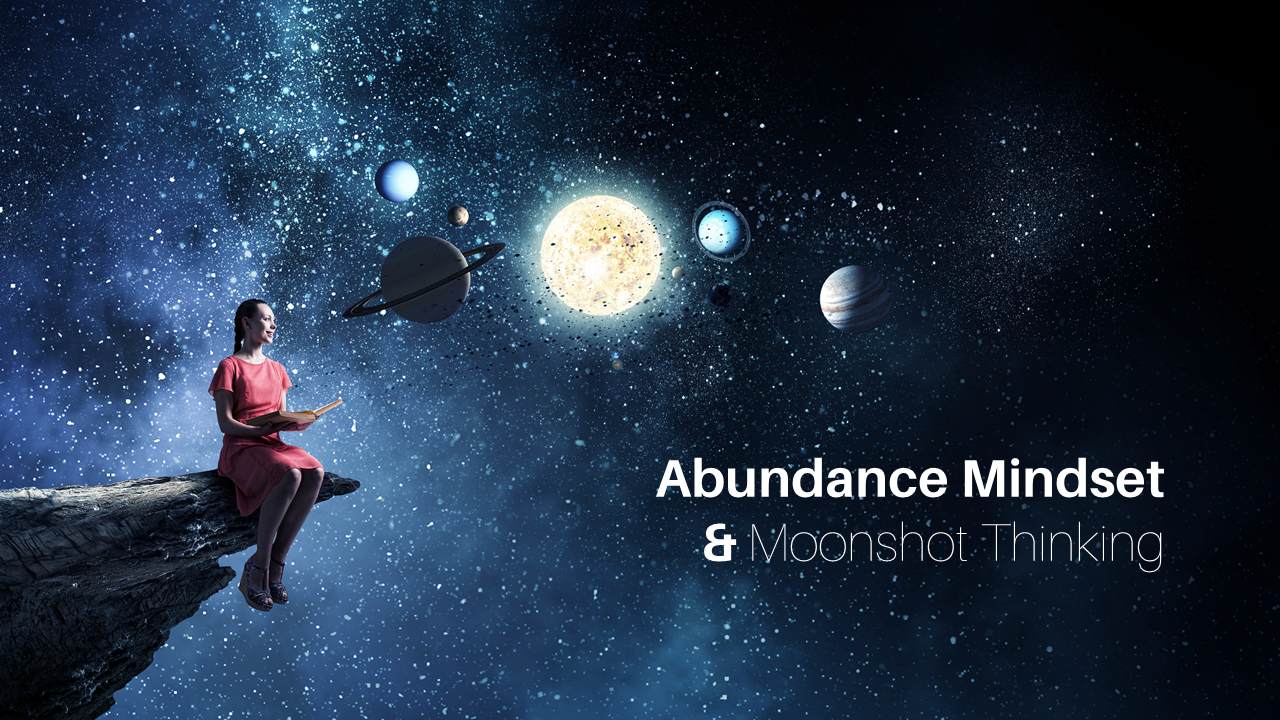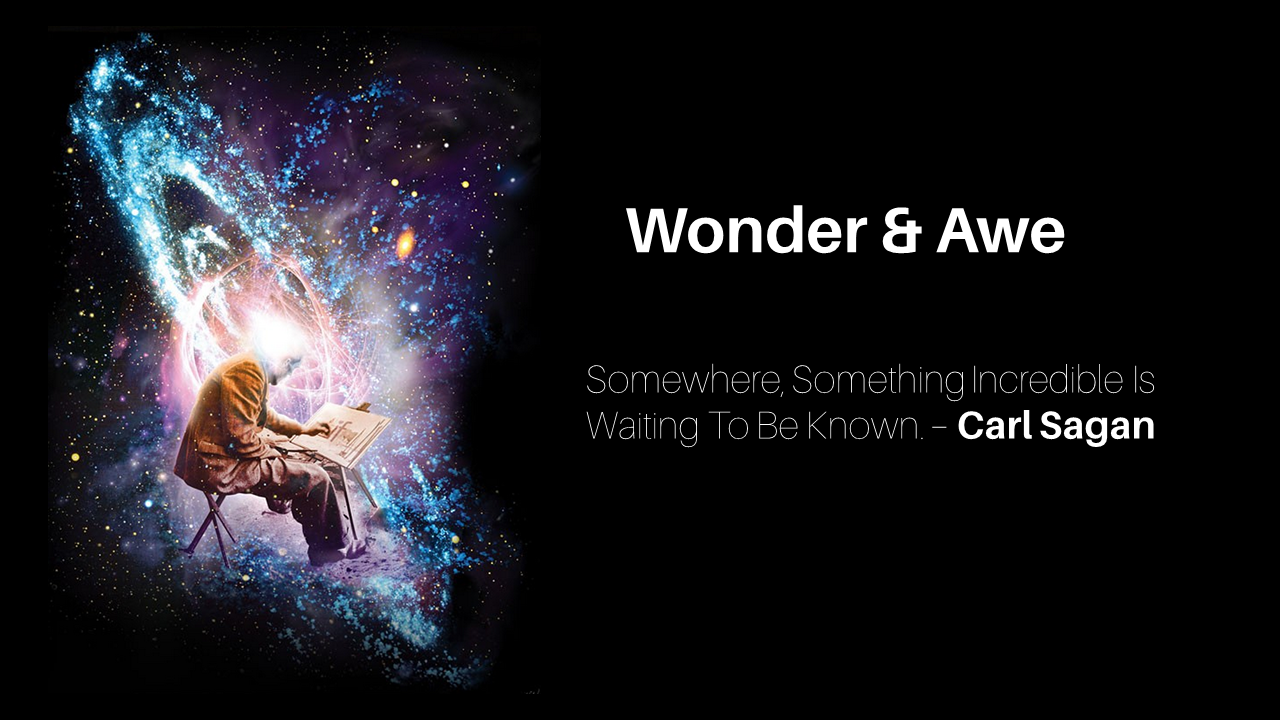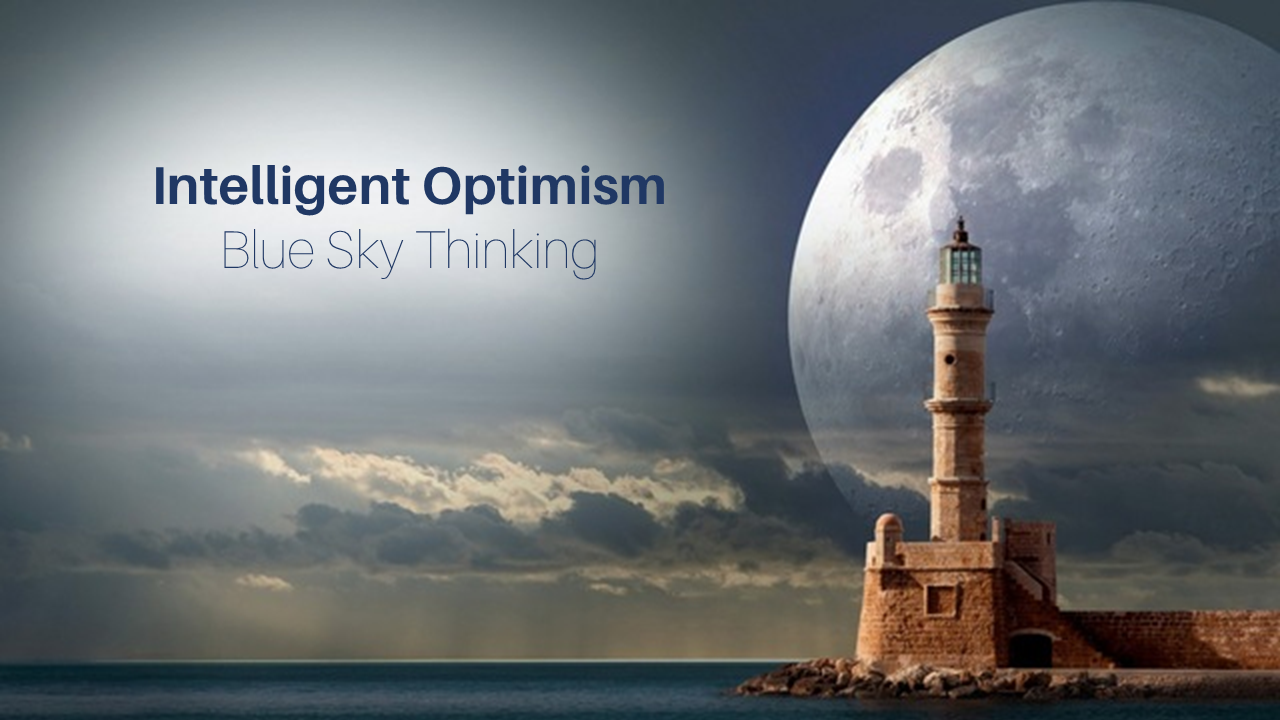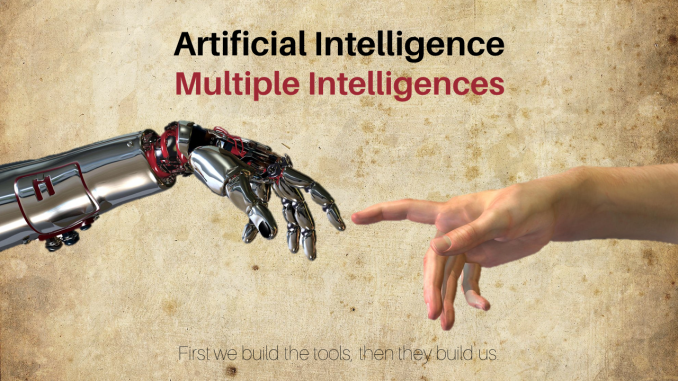
Rohan Roberts
Part 1: The Many Ways of being Intelligent
How do we define “Intelligence”?
One definition is to say intelligence is the ability to think in abstract terms. This is what separates us from animals. Polar bears, walruses, otters and other mammals have a marvellous ability to survive in their habitat. However, “intelligent” isn’t a word that leaps to mind when we describe them. It is humans who have the ability to think in abstract terms – to use metaphors, to devise calculus, to convert music to notes, to associate colour with emotions, to use logic, to think about thinking, to moralise, to contemplate eternity, and so on.
Another definition is to say intelligence is what the intelligence tests test: Most people associate intelligence with IQ Test scores. IQ tests focus mainly on language and logical-mathematical skills.
Howard Gardner is an American developmental psychologist and Professor of Cognition and Education at Harvard University. He is best known for his Theory of Multiple Intelligences, which he proposed in 1983 to analyse and better describe the concept of intelligence. His theory also addresses the question whether traditional IQ tests are truly reliable indicators of intelligence.
Howard Gardner says, “Intelligence is the ability to find and solve problems and create products of value in one’s own culture.”
Intelligence and its value varies from culture to culture. A New York stockbroker would be considered supremely intelligent in his urban world. An Amazonian Indian would perform poorly on an IQ test. But that doesn’t mean the Amazonian tribesman is not intelligent. He shows an excellent understanding of his habitat: he knows which plants to avoid, how to deal with poisonous bites, how to make spears and hunt… this knowledge would make him intelligent in his world. The NY stockbroker’s urban intelligence is of little use to him in the Amazonian habitat.
Thus, intelligence may be considered the ability to find and solve problems and create products of value in one’s own culture.
Multiple Intelligences
The theory of multiple intelligences suggests that there are a number of distinct forms of intelligence that each individual possesses in varying degrees. There are different ways of being intelligent. In its essence, Multiple Intelligences considers the ability to sing and dance, to play music and sports, to sympathise and empathise, to reflect and introspect, to role-play and emote… all as different ways of being intelligent.
(Prodigies and savants are individuals who are exceptionally gifted in one intelligence – whether it is music or art or Mathematics or memory recall.)
Gardner’s pluralistic view of intelligence suggests that all people possess at least eight different intelligences that operate in varying degrees, depending upon each individual:
Linguistic intelligence (“word smart”)
Logical-mathematical intelligence (“number/reasoning smart”)
Spatial intelligence (“picture smart”)
Bodily-Kinaesthetic intelligence (“body smart”)
Musical intelligence (“music smart”)
Interpersonal intelligence (“people smart”)
Intrapersonal intelligence (“self smart”)
Naturalist intelligence (“nature smart”)
The eight intelligences weren’t pulled out willy-nilly from a hat. Gardner used the following eight criteria to codify the intelligences:
- Identifiable cerebral systems
- Evolutionary history and plausibility
- Identifiable core operation or set of operations
- Meaning that can be encoded in a symbol system
- A distinct developmental history and mastery or “expert” levels
- Existence of savants, prodigies and exceptional people
- Evidence from experimental psychological tasks
- Psychometric findings
For too long parents and educators have focused their attention only on linguistic and mathematical skills. The child good at football, or art, or the guitar was considered talented, but not necessarily intelligent. The Theory of Multiple intelligences allows for a broader understanding of the word “intelligent.”
MI theory is not a theory of exclusion but of inclusion. The average person will possess all the eight intelligences – but in varying degrees. A person may not be able to read but that doesn’t mean they don’t have linguistic intelligence. They may be an excellent storyteller, for instance.
Most people can develop each intelligence to an adequate level of competence. Not everyone is an author – but they can certainly read and write. Not everyone can play a musical instrument, but they can hum a tune. Not everyone may be good at Maths, but they know how much change they should expect at the supermarket.
Intelligences are complex
Intelligences work together in complex ways. An actor uses not just bodily-kinaesthetic skills when he acts, but linguistic skills when he reads and recites his lines, intrapersonal skills to gauge the effectiveness of his performance, interpersonal skills to be able to empathise with his role and character.
When a child tells a lie for instance, they use a whole range of intelligences: they obviously use linguistic intelligence when they speak. However, they also use bodily-kinaesthetic intelligence to make their gestures and facial expressions seem believable. They use interpersonal skills to judge how their teacher is responding to their lie and thus modify their words accordingly. They use intrapersonal intelligence to keep track of the sequence of their lies and why they are doing it and how far they can go on and to decide what they hope to get out of the lie.
There are many ways to be intelligent within each category: Linguistic intelligence involves speaking, reading, and writing abilities. Musical Intelligences involves being able to sing, play an instrument, tell if a song is off-key, whistle, hum a tune, keep beats, or identify different notes.
Pure Intelligence
A pure intelligence is rarely seen. A person with only one intelligence might be considered autistic and wouldn’t be able to function in the normal world. (There are people who can do fantastic calculations in their head but couldn’t tell you what day it is or wouldn’t know how to cross a street.)
Gardner’s theory is extremely important for the future of education. It is important to realise that each person possesses all intelligences and the education system should be catering to all the varied intelligences in the class? Why? – Because “Intelligence is the ability to find and solve problems and create products of value in one’s own culture.”
In his book, Frames of Mind: The Theory of Multiple Intelligences, Howard Gardner points out that “in contrast to IQ scores and labels such as smart, average, or dumb, the Theory of Multiple Intelligences enables educators to look at the diverse ways children problem solve and apply what they have learned.” He also emphasises that different areas of the brain work in complex ways and in concert to help students solve problems or figure out solutions.
Artificial Intelligence and Multiple Intelligence
Young people today are being educated for jobs that don’t exist. They will be using technology that hasn’t been invented, and will have to solve problems that haven’t yet emerged. We live in a world of accelerating change. We are increasingly being surrounded by exponential technologies and ubiquitous Artificial Intelligence. Whatever can be automated and outsourced, will be automated and outsourced. Whatever can be done by AI will be done by AI.
In fact, many of the skills and competencies we thought were once considered uniquely human are now being done by Artificial Intelligence. Below is a quick overview of how AI is mastering the various intelligences
People with high verbal-linguistic intelligence display a facility with words and languages. We currently have AI that can write stories, news reports, and screenplay scripts. IBM Watson is a question answering computer system capable of answering questions posed in natural language. It beat the best human champions in the quiz show Jeopardy. What is not generally appreciated is that Watson’s knowledge was not hand-coded by engineers. Watson got it by reading Wikipedia – all 200 million pages of it.
Musical intelligence has to do with sensitivity to sounds, rhythms, tones, and music. We used to think creating music was a uniquely human skill. We currently have Deep Learning systems composing music. AIVA (Artificial Intelligence Virtual Artist) is a system that composes music for films. It recently released “Genesis,” its first album, and has officially become the first AI to acquire the worldwide status of Composer. It has even been registered under the France and Luxembourg authors’ right society (SACEM), and its work is copyrighted in its own name. The title track from the album is sublime and deeply moving. To think that a non-human could create something this powerful and emotionally moving is hard to believe. You have to hear it to believe it. And once you do, it will shake you to the core.
Over in China, Baidu is the largest search engine. Their Baidu AI Composer is now using the world’s largest neural network to compose original music inspired by art. Using image recognition software the system scans various images of art and identifies various elements of the painting: objects, colours, setting etc. Analysing tags that people have used for each painting, the system can also associate tone and mood with each painting. Baidu’s Deep Learning system then connects with a database of musical compositions that are divided up into musical units and itemised based on the moods and emotions they evoke. The AI Composer system then reinterprets the elements of the image as a series of notes, fits together bits of music based on the mood of the image, and ultimately creates a unique and original melody.
Visuospatial intelligence deals with spatial judgment and the ability to visualize with the mind’s eye. We used to think only humans could create art. When we gaze upon the cave paintings in Lascaux, we are profoundly moved by the humanity of it. However, today, Google’s Deep Dream system can create art. It is a program that adjusts an image to stimulate the pattern recognition capabilities of a deep neural network. By running the image recognition programme backwards, Deep Dream was able to generate phantasmagoric pagodas, psychedelic dogs, alien-looking plants and so on – images that looked haunting and hallucinatory and not a little disconcerting when we realise that no human had programmed these systems to create art and we had little idea how the system was doing it.
Prisma is a photo-editing application that utilizes a neural network and artificial intelligence to transform images into a range of artistic styles and effects: Picasso, Munch, Van Gogh, Chagall etc.
Kinaesthetic intelligence involves the control of one’s bodily motions and the capacity to handle objects skillfully. Robots and machines have been doing this for decades. However, we now have a new generation of robots that come in a wide range of forms and can do remarkable things. We have robots that can swim like an octopus, glide like a snake, fly like an insect, walk like a dog, run like a human, and even do precision surgery. In fact, Boston Dynamics’ Atlas robot can even do somersaults and backflips.
Interpersonal intelligence involves the ability to interact with other people. There are many examples of AI exhibiting this intelligence today. Siri, Google Now, and Cortana are all smart agents or intelligent digital personal assistants on various platforms (iOS, Android, and Windows Mobile). Their primary ability is to understand human speech and retrieve relevant information. That may soon be commonplace, but if we stop and think about it, it is a remarkable achievement to have a conversation with a non-human as if it was the most normal thing in the world. Right now, much of the conversation is restricted to factual information, like ‘Siri, where’s the nearest petrol station?” or “how far is New York?” However, in the very near future, these smart agents will be able to have much deeper and existential conversations with their owners. Even now, these smart agents are constantly learning more about the habits and behaviours of their owners. Soon, they will start to anticipate our needs and be far more effective in their interactions with humans.
Mathematical intelligence has to do with logic, abstractions, reasoning, numbers, and the capacity to understand the underlying principles causal systems. Forty years ago, a calculator was a cutting-edge example of an AI. Today we’re not impressed. In the late 1990s IBM Deep Blue’s victory over Gary Kasparov at chess left us amazed. Today, we’re not impressed. In October 2015, AlphaGo became the first computer Go program to beat a human professional Go player without handicaps on a full-sized 19×19 board. AlphaGo uses a Monte Carlo tree search algorithm to find its moves based on knowledge acquired through machine learning, and using artificial neural network.
Some sceptics say many of the current examples of AI are nothing more than very sophisticated algorithms. But the rebuttal to that is if these systems have the ability to solve problems in creative ways, then they are certainly manifesting some degree of intelligence.
So far, we have considered the Multiple Intelligences that A.I. is capable of imitating. However, there are still three Intelligences identified by Gardner that A.I. still hasn’t been able to master. These are Existential Intelligence, Intrapersonal Intelligence, and Pedagogical Intelligence. Ironically, these are also the three intelligences that are least catered to in schools. As we move into the future, these three intelligences will have increasing significance in a world of ubiquitous automation and artificial intelligence.
Part 2: Intelligence in a Post-A.I. World
In the part 1, we considered the Multiple Intelligences that Artificial Intelligence already exhibit today. In part two, we consider the three intelligences for which A.I. does not exist.
Existential Intelligence is one of the intelligences in Howard Gardener’s taxonomy of multiple intelligences. It is the intelligence ascribed to those who think philosophically and involves an individual’s ability to contemplate values and intuition to understand themselves and the world around them. People who possess this intelligence are able to see the big picture and ask the big questions. They are able to see the interconnectedness of different aspects of life and wonder about the complexity and diversity of the universe
Existential intelligence was not included in the original seven intelligences that Gardner listed in his original list of Multiple Intelligences. However, Gardener has always been a stickler for research, and after an additional two decades of research, he decided to include existential intelligence but not officially (probably because he wisely realised how problematic it would be to claim a seat of the numinous or existential wonder in the brain). He did, however, say, “This candidate for intelligence is based on the human proclivity to ponder the most fundamental questions of existence. Why do we live? Why do we die? Where do we come from? What is going to happen to us? I sometimes say that these are questions that transcend perception; they concern issues that are too big or small to be perceived by our five sensory systems.”
Existential Intelligence is catered to the least in most schools. This is probably because most teachers do not possess this intelligence in any great degree, which in turn is because it was not nurtured in them when they were young.
A way to promote existential intelligence in the classroom is to give students the opportunity to contemplate the universe they live. An understanding of the scale and mystery of the cosmos we live in never fails to arouse deep existential feelings in many people. Encouraging students to adopt different perspectives, take part in Socratic dialogue, ask profound questions, and explore their inner self are a few ways to promote Existential Intelligence in class. These are questions most young kids ask anyway. They are naturally curious about these matters. Unfortunately, the conventional school system systematically distracts them from this interest and forces them to focus on the curriculum and on exam grades.
Pedagogical Intelligence wasn’t in the original list of Intelligences. However, in 2016, Gardner mentioned in an interview with BigThink that he is considering adding the teaching-pedagogical intelligence which is the intelligence that allows human beings to convey knowledge or skills to other persons. It also involves the ability to research, analyse, select relevant information, transfer competencies, and develop learning pathways.
In the same interview, Gardner explicitly refuses some other suggested intelligences like humour, cooking and sexual intelligence – because there is neuroscientific evidence for it.
In the interview, Gardner says, “Not only is my theory based on evidence from science; it can and will be changed on the basis of new scientific evidence. Fifteen years ago, I would not have spoken of pedagogical intelligence, but the evidence is accruing that the ability to teach is a distinctly human capacity which begins to develop in the first years of life.” Schools and Universities should take particular note of this and realise that being an educator and having pedagogical intelligence appear to be two separate features.
Intrapersonal intelligence involves the ability to introspect and be self-reflective. It includes having a deep understanding of the self; what one’s strengths or weaknesses are, what makes one unique, and being able to predict and analyse one’s own reactions, emotions, and motivations.
Currently, there is no A.I. that is capable of exhibiting introspection, self-reflection, and metacognition. It is hard to say whether this might change in the future. Will AI become self-aware and sentient? Will we be able to come to grips with the hard problem of consciousness? Will we have AI that have both mind and intelligence? Will AI have a sense of Self? At this point, it might be useful to quote a limerick by the wonderful philosopher, Alan Watts, who is credited with making Eastern thought accessible to a Western audience in the 1960s:
There once was a man who said, “Though
It seems that I know that I know.
What I’d like to see
Is the “I” that knows “me”
When I know that I know that I know.”
Will we ever have an AI that thinks about itself thinking about thinking?
Ray Kurzweil points out that by the second half of this next century, “there will be no clear distinction between human and machine intelligence. On the one hand, we will have biological brains vastly expanded through distributed nanobot-based implants. The law of accelerating returns implies that by 2099, the intelligence that will have emerged from human-machine civilization will be trillions of trillions of times more powerful than it is today, dominated of course by its nonbiological form.”
We are now surrounded by Artificial Intelligence and AI systems. However, what we are anticipating is the advent of Artificial Super Intelligence (ASI). This is what humans have to be worried and excited about. (There are those like Elon Musk and Stephen Hawking who say we should be worried. Others, like Neil Degrasse Tyson, are not worried. “Bring it on,” says Tyson). However, Neuroscientist and public intellectual, Sam Harris, compares the arrival of ASI to receiving a message from extraterrestrial aliens. If we received a radio message from aliens announcing their arrival on Earth in 30 years, what would our reaction be? We know these aliens would be far more intelligent than we are because at the very least they would have the knowledge of how to travel between stars. Should we be excited about the prospect of encountering these aliens? Or, should we be concerned? We know ASI is coming; it is just a question of when.
Nick Bostrom defines Artificial Super Intelligence as “an intellect that is much smarter than the best human brains in practically every field, including scientific creativity, general wisdom, and social skills.” However, when we talk about ASI we must factor in its ability to exhibit all the various Multiple Intelligences.
Currently, schools focus on Pedagogical, Existential, and Intrapersonal intelligence only in the most cursory way, if at all. However, in a world of increasing automation and ubiquitous A.I. where machines are taking over from humans and superseding us in almost every domain, what we need more than ever is balance. Balance and harmony between all the Multiple Intelligences.
But also, balance and harmony in other domains: It is important for us to teach our kids to see things in shades of grey and perceive things in duality. We must endeavour to teach them to take a yin-yang approach to life: pragmatism and spirituality, skepticism and belief, reason and emotion, the Apollonian and the Dionysian, the literal and the metaphorical, the masculine and the feminine, empiricism and mysticism, rationality and intuition, Aristotle and Buddha, logos and mythos, investigation and insight, experimentation and imagination, intellect and instinct, science and the arts, technology and philosophy, sobriety and psychedelia, agency and meditation…. It is the ability to harmoniously use all these tools of action and cognition that will allow us to develop into a well-rounded person and attain mental peace and a deeper, more fulfilling conception of Reality and the Self.
Currently, to the best of my knowledge, Awecademy is one of the rare few educational platforms that focuses on Existential, Pedagogical, and Intrapersonal Intelligences in a deep and meaningful way.
In part 3, we consider the importance of focusing on these three Intelligences as we move into the future and edge closer to the Technological Singularity.
Part 3: Robot proofing in a World of Ubiquitous A.I.
In a future of ubiquitous A.I. where everything that can be automated will be automated, we have to ask ourselves what then should schools focus on? Schools ought to focus on all those skills, competencies, and fluencies that cannot be automated and for which AI doesn’t exist.
In parts 1 and 2, we considered how of all the Multiple Intelligences the ones for which AI doesn’t exist are Existential Intelligence, Intrapersonal Intelligence, and Pedagogical Intelligence. Currently, our educational system does not really focus on developing these intelligences except in the most cursory and perfunctory way.
Moving forward, we have to change the focus of high schools from obsessing with the curriculum and teaching to the syllabus. Schools should no longer be about preparing students for exams. The purpose of schools is not to simply get students into University.
In a post-AI world, the focus of education has to be different. Awecademy’s Massive Transformative Purpose is one of the few future-focused educational platforms that is thinking in the right direction. Awecademy’s MTP is to prepare the next generation of cosmic citizens to help bring about civilisation-level change. This aligns with what the purpose of schools ought to be in a post-A.I. world, which is to help students become upstanding individuals who take a cosmic perspective and focus on solving the problems of the world.
This is not airy-fairy thinking. This is not la-di-dah sentimentality. When we zoom out and look at the big picture; when we contemplate the fate of the human species and all life on this planet; and when we consider the grand scheme of things – then, there can be no other purpose of education.
What is required is a bigger vision for our youth and a higher expectation of our educational system. Peter Diamandis says, “The new definition of billionaire is he who will positively affect the lives of a billion people.” We have to give our youth the tools and wherewithal to become this kind of billionaire.
Once we acknowledge that the purpose of education should be to develop upstanding cosmic citizens who will solve the problems of the world then we can focus on other priorities related to the purpose of education:
- To create individuals who are scientifically literate and can think critically
- To create individuals who are self-reliant and can survive independently as adults
- To promote creativity, kindness, innovation, collaboration, curiosity and other 21st century skills.
If we are to help bring about civilisation-level change, prepare for the singularity, and help our species transcend, then what we need is to first focus on changing mindsets. We need to focus on developing an abundance mindset, nurturing Intelligent Optimism, and taking a cosmic perspective
A cosmic citizen is anyone who recognizes our place in the universe, the fragility of our planet, and the unimaginable potential we have as a species. At its core, the cosmic perspective is about zooming out and seeing the big picture. It involves acknowledging our place in the cosmos and stepping back and contemplating our purpose in the grand scheme of things.
Taking a cosmic perspective stimulates a determination to successfully resolve all the problems we have here on Earth and focus on the issues that matter. Looking at ourselves from a cosmic perspective is known to inspire more compassion for our fellow human beings and all life. After all, from space, national boundaries and geographic differences disappear, and it becomes clear that at the end of the day, we are all fundamentally human.
In the words of Neil deGrasse Tyson, “I want people to see that the cosmic perspective is simultaneously honest about the universe we live in and uplifting, when we realize how far we have come and how wonderful is this world of ours.”
It is a powerful awakening of the mind and a fundamental redefinition of what it means to be human. It upgrades our consciousness, our values, and the kind of ambitions that we set forward for ourselves, both as individuals and as a species.
Transhumanism is a mode of thinking about the future of our species. It is premised on the notion that Homo sapiens in our current form don’t represent the end of evolution. Instead, transhumanism is the belief that we are in an early stage and a continually transitionary phase of becoming something much greater and far more impressive using superior technologies to upgrade our bodies, our minds, our morality, and our priorities. “What is great in Man,” said the philosopher Nietzsche, “is that he is a bridge, not an end.” Transhumanism is the belief that with the exponential growth of technologies and an increasing merger with our tools, Humans 2.0 is a real possibility.
Renowned education expert and author, Marc Prensky, points out that, “We educate our kids so they can better their, and our, world. Our children can be, and should be, improving their world—and improving themselves in the process—via a new approach that far better suits them and the needs of our future society. From the very start of their education, we should be fusing ‘thinking skills’ and ‘accomplishing skills’ into an education with a direct, hands-on connection to the world and its problems.”
Civilisation-level change involves solving our global grand challenges, creating abundance for all, ushering in large-scale economic reform, eradicating superstition, elevating art as civic responsibility, promoting scientific literacy, reason, compassion, and the values of the Enlightenment, and perhaps what’s most exciting: preparing to be a multi-planetary species.
We live in a world where exponential technologies are disrupting all aspects of human society. But many of these technologies are resource-liberating mechanisms. They have the ability to make the once-scarce now-abundant. In his book, Abundance: The Future is Better than you Think Peter Diamandis narrates the story of Aluminium. It used to be the most expensive metal on the planet. More expensive than gold, silver, and platinum. It was expensive not because it was rare (Aluminium is the second most abundant element in the earth’s crust). It was expensive because we did not have the technology to extract it from its ore. This changed in the mid-19th century when we discovered the process of electrolysis. Aluminium suddenly went from being expensive and rare to abundant and cheap. How cheap? So cheap that we crumple it up and throw it in the garbage bin in the form of aluminium foil.
Think of all the other resources that are scarce – energy, food, water, shelter, access to education and healthcare – with the right kind of technology these can be abundant for all. We have to equip our kids with an abundance mindset and the belief that they can solve the problems facing our species and our planet. That is where Moonshot Thinking comes in.
The original moonshot was landing humans on the Moon. The United States went from having no space programme to putting human boot prints on the surface of the moon in ten years.
Moonshot Thinking is shooting for the moon. Thinking big. They are 10x improvements not 10%. It addresses a huge problem, proposes a radical solution, and uses breakthrough technology to make it happen.
Larry Page talks about how he asks people whether they are working on something that will change the world. The answer, he says, from 99.999% or people is No. We have to work on training kids to think about how they can change the world. Teachers often underestimate the abilities of their students. It is time for educators to have much higher expectations of what their students are capable of. It is time for educators to help students meet their highest potential to be a force for positive change in the world – while they are still in school. It is not enough to teach our kids to dream big. We have to help them to do big as well. It is time to create opportunities for moonshots in the classroom.
Not every student wants to be an entrepreneur. Nevertheless, a student who wants to be entrepreneur needs support from a range of students who have varied skillsets. To solve some of the challenges facing society, we have to integrate science and tech, with art and design, and with business and entrepreneurship. In addition, we have to package and deliver it with a sense of wonder and awe.
Teachers wear many hats: they are guides, counselors, facilitators, coaches, mentors, caregivers, and community leaders. They play many roles, including that of accountant, designer, judge, tour guide, cheerleader, social butterfly, Big Brother, and yes, sometimes even cop. However, it is imperative that teachers start seeing themselves in another role; – teachers have got to start seeing themselves as entertainers.
When teachers see themselves as entertainers then the classroom is no longer a classroom. It becomes a stage. The students are no longer students; they are the audience. The lesson is no longer just a lesson; it becomes a show. And, if teachers want their audience to come back again and again, day in and day out, then they’ve got to keep the show entertaining.
The key words for the teacher-as-entertainer to keep in mind are “Awe” and “Wonder”. Children are naturally curious. They have an innate desire to learn. They want to be impressed. However, they are surrounded by so many stimuli that are competing for their attention: fancy gadgets, television commercials, computer games, social media, and so much more. The 21st century teacher has to acknowledge this and recognise that they are competing with a brash, fast-paced, exciting world outside the four walls of the classroom. If they want to keep their students engaged, excited, and enthusiastic, then they have to keep their students entertained and fill them with a sense of awe and wonder.
And we do live in an awe-inspiring world. Think of the remarkable progress our species has made. We have seen more progress in the last 100 years than in the previous thousand.
A cousin of Straight Line Thinking, Blue Sky Thinking is an imagined and speculative leap into the future, beyond current thinking or beliefs but still with a favourable desired and deterministic outcome in mind. Dr Rachel Armstrong points out that Black Sky Thinking is when an individual or organisation wants to reach beyond the Blue Sky. Beyond current frameworks and pre-determined projections, into the terrain of the unknown. But more than this, bring this unknown into the present in a way that has immediate effects and engages others, always cognisant that the ‘Future Is Messy’, not linear and deterministic.
We are reaching a tipping point. Radical changes await us. The merger between nature and technology could lead to a new Cambrian Explosion of lifeforms. If such a scenario awaits us then it cannot be acceptable that its outcomes remain unknown. It is essential that we involve young minds in these profoundly important conversations about the future of us, the future of life, and the future of the universe. We’ve got to equip them to navigate this future space in a way that is bold, propositional, experimental, moral, creative, and optimistic.
However, the last thing we need is blind, lazy, and uninformed optimism. It is more important to be optimistic based on reason and by facing facts. Intelligent optimism is all about being thrilled, excited, and optimistic about the future in an informed and rational way based on statistics, data, evidence, facts, science, and empirical evidence.
Imagine what it is like to be a child or a young adult. Imagine being bombarded every single day with news of how bad the world is; how society is going down the drain; how human beings are just awful creatures. Imagine reading the newspaper or tuning into the mainstream media and being inundated with a barrage of negative news: bomb blasts, terrorist attacks, car accidents, plane crashes, rapes, murders, rising inflation, economic recession… and on and on and on… day in day out, week after week, month after month, year after year.
What would this do the psyche of a young mind? How would it affect their sense of self and their sense of purpose in the world? How would it affect their hopes, dreams, and aspirations for themselves, their families, and the rest of the world?
However, the good news is that the doomsday merchants, naysayers, and peddlers of gloom are all wrong and always have been. By almost every single measure and in almost every single index the world is actually getting better. In fact, this is the best possible time for a human being to be alive. And according to Director of Engineering at Google, Ray Kurzweil, because of the convergence of Exponential Tech, in the next 100 years we will see the equivalent of 20,000 years’ worth of progress.
The technological singularity that Ray Kurzweil talks about is a point in the future where exponentially growing technologies will usher in an age of greater than human intelligence and increasing merger between biological and artificial intelligence.
When artificial systems become trillions of times more powerful than human brains, and when they learn to communicate with each other in ways we didn’t programme them to, that’s when we’ll see the Technological Singularity – the technological equivalent of the biological Cambrian explosion.
All this will have an even more dramatic impact on the human condition, when Quantum Computing combines with A.I. and when that in turn combines with robotics. The question for us now is what do we teach our kids in schools? What should we educate them for?
The future is hard to predict, but one thing we can say with certainty is that a focus on grades and university degree is no guarantee of success in the future. Instead of focus on subjects and content, we have to focus on developing 21st century skills, future fluencies, and new competencies.
Based on the works of renowned educationists like Marc Prensky, Sir Ken Robinson, and Tony Wagner, here are the top 12 skills and abilities we ought to focus on in a 21st century school:
- Critical thinking & problem solving
- Collaboration across networks and leading by influence
- Agility, adaptability, and the ability to unlearn and re-learn
- Initiative & entrepreneurship
- Accessing & analyzing information
- Effective oral & written communications (and graphic visualization)
- Curiosity and imagination
- Systems Thinking, Design Thinking, & Computational Thinking
- Cross-curricular thinking & multi-disciplinary problem solving
- Project management
- Resilience and grit
- Ethics, Empathy and Self Knowledge (of one’s passions, strengths and weaknesses)
What we urgently need is to focus on changing the Core and focusing on “Lifeworthy Learning” – a phrase coined by founding member of Harvard’s Project Zero, David Perkins. Essentially, “Lifeworthy Learning” is learning that will probably be of use in the individual’s future. And what will be of use are all the things that robots can’t do.
In his book Robot-Proof: Higher Education in the Age of Artificial Intelligence, Joseph Aoun makes the case that education is not concerned solely with “topping up students’ minds with high-octane facts. Rather, it calibrates them with a creative mindset and the mental elasticity to invent, discover, or create something valuable to society — a scientific proof, a hip-hop recording, a web comic, a cure for cancer.” In this, Aoun addresses Gardner’s definition of intelligence: the ability to create products of value for society. Aoun lays out the framework for a new discipline, humanics, which builds on our innate strengths and prepares students to compete in a labor market in which smart machines work alongside human professionals. Humanics is the study of all the areas of human knowledge and endeavour that will prepare us to survive and excel in a post AI world of ubiquitous automation.
An exciting future awaits us. How we prepare ourselves and our children for this new world is crucial to the success of our species. As the Imaginary Foundation says, “Think of an exciting, ecstatic, desirable future, and pull the present forward to meet it.” The only real, meaningful, and lasting way to do that is to fix our educational system.
In his 2017 TED talk, titled Can we build A.I. without losing control over it? Neuroscientist, Sam Harris, envisions a future where we design the perfect super intelligent A.I. that would be the perfect solution to human drudgery. But it would also be the end of most intellectual work. What would human beings do?
Of course, there is a puritanical notion of Work that states one mustn’t eat if one doesn’t work; or that work means struggling in the now to experience redemption in the future. However, these are relics of a pre-super-A.I., pre-Abundance age.
It is not unlikely that we will soon be living in a world of Universal Basic Income, where 3D printing, super A.I., robots, drones, nanotech, along with other exponential technologies will ensure that most humans are freed from drudgery and mind-numbing repetitive work. Is this a good thing? In and of itself, yes. We must see certain jobs as an insult to basic human dignity. If these jobs can be automated and done by machines then we have a moral obligation to do so.
However, this would lead to a world of unprecedented leisure. In his TED talk, Sam Harris asks, “So what would apes like ourselves do in this circumstance? Well, we’d be free to play Frisbee and give each other massages. Add some LSD and some questionable wardrobe choices, and the whole world could be like Burning Man.”
The audience chuckled amiably in response to that statement. But, the fact is, there’s much to learn from Burning Man about the future of work. What happens in Black Rock City and the principles on which Burning Man is founded sound very similar to predictions of a post-A.I. human future.
Burning Man is an annual gathering that takes place at Black Rock City—a temporary community erected in the Black Rock Desert in Nevada. The event is described as an experiment in community living and art, influenced by 10 main principles, including ‘radical’ inclusion, self-reliance and self-expression, as well as community cooperation, civic responsibility, gifting, decommodification, participation, immediacy and leaving no trace. At Burning Man, the community explores various forms of artistic self-expression, created in celebration for the pleasure of all participants.
It is a decentralised world based on a gifting (not barter) economy – where money is of no consequence. It is a timeless world that never sleeps; where human beings spend their time on creating art or experiencing it; and a world where art functions as civic duty. And, most importantly of all, its members rotate constantly and exist predominantly in a virtual world – coming together to meet physically for only nine days in a year. Tens of thousands of people find meaning, spiritual connection, and artistic expression in the middle of the desert without any exchange of money. This is as futuristic as it gets, given the current trends in technology and economics.
